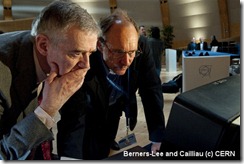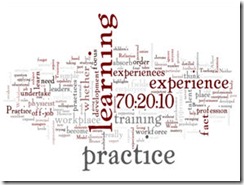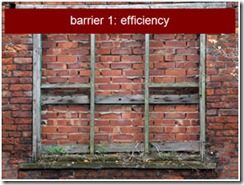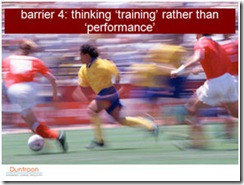At some point in time I am sure we’ve all found ourselves with an answer staring us in the face, but we just haven’t managed to see it yet.
Spending money, time and effort providing face-to-face training or eLearning courses for workers in an attempt to equip them to use new processes and systems as they’re rolled out across our organisations is one of these cases.
Most of us know there are better solutions, but few Training and L&D people utilise them.
The Systems and Processes Training Dilemma
Many of us have faced the challenge of ensuring that employees can navigate and use new processes and systems as they're deployed across our organisations. All of us in corporate or organisational L&D roles are tasked with ensuring new hires come to terms with their ERP and CRM environments and with other specific processes and products quickly and efficiently.
Almost without exception this challenge is met with some form of training solution. Equally, there’s usually a call for more training when systems and processes change or when the initial training hasn’t ‘stuck’ first time around.
However there are far more effective and efficient approaches than training that address this challenge of improving ‘speed-to-competence’. It’s just that they seem to be out of the range of vision of many L&D practitioners.
The Power of Performance Support - Integrating Learning into Work
One of the most powerful alternatives to the ‘train-and-train-again’ approach is some form of Performance Support. Performance support has been part of the toolkit for building human performance and productivity for centuries. In fact the master-apprentice model is based on the concept of performance support and it’s been around almost since the dawn of mankind. A worker with a higher level of mastery ensures on-the-job support is always at hand as the apprentice develops their own mastery.
Over the years a wide range of job aids, whether delivered with the help of technology or not, have been used as simple forms of performance support. However the implementation of performance support tools and solutions as a more effective alternative to training is still on the periphery rather than at the core of how workforce development is done.
ePSS
Most of us know quite a lot about ePSS - Electronic Performance Support Systems. They are job aids’ younger brothers.
ePSS has been around in reasonably developed form for at least the past 20 years. Gloria Gery’s excellent 1991 book ‘Electronic Performance Support Systems: How and why to remake the workplace through the strategic application of technology’ which emerged from earlier ideas at AT&T was an important waypoint for the concept and practice and should be on every L&D professional’s bookshelf.
Although ePSS as a mindset has grown up considerably since Gery wrote her book, it hasn’t been adopted by the L&D community.
Gloria Gery – a prophet ahead of her time
Think about the following extracts – taken from a 1994 interview by Training & Development Journal with Gery:
“At the heart of an EPSS attitude is a belief that most organizations today face a performance crisis that training alone cannot solve….
….conventional training events are inefficient learning tools compared to an EPSS that makes learning just a point-and-click away.
….an EPSS provides task structuring and puts learning tools and data at a performer's fingertips--something conventional training can't do.”
Gery goes on to say:
“When you strip away the collusion about what is working and what isn't, you have to face the fact that training methodologies are based on a set of fallacious assumptions from public education in the 19th century”.
“Until the 1960s the only model for transfer of knowledge was the Socratic dialogue and the apprenticeship. And that only changed because the number of people needing training grew too large for one-on-one methods. That's what gave us group training."
“Group training may have worked in simpler times but now work complexity and instability of knowledge lessen its effect."
“Training events remove novices from real life and from the experts who really know the work. People are trained and outfitted with manuals and job aids, but they still don't have the competence of experts. Back on the job, most can't perform at the experts' level on tasks they were trained to do. And for tasks not covered in training at all, they are left to their own devices.”
All the above still makes great sense. Remember, Gery was making these statements almost 17 years ago.
What have we learnt in the intervening time? Have approaches employed by the majority of Training and L&D professionals when faced with the roll-out of a new system or process altered, adapted and improved?
Not much, I would suggest.
Most organisations are still spending large amounts of time and money developing and deploying structured training programmes to accompany new system and process initiatives. Yet we know the impact of training usually isn’t great. Workers still tend to turn to their colleagues (or floor walkers or help desks if they exist) for support the first time they need to work in the new environment because they haven't actually learned much from the training.
Training for these purposes just doesn't work.
Yet every ERP and CRM deployment plan I've ever seen has had a ‘training budget’ line in it. Programme and project managers seem to feel that if for no other reason than there is money allocated, structured training is an essential part of any roll-out.
Thinking about alternative and better ways of ensuring workers can use new platforms and processes is often considered just too hard.
The Range of Performance Support Approaches
Over the past 20 years the Web has provided a platform for the development of some sophisticated integrated performance support tools and environments. Some of these are being used by more enlightened organisations that are focusing on ‘working smarter’ and can see the benefits of integrating workforce development with work.
As a result there are some excellent performance support tools and approaches available for today’s learning professional. Some are very simple (a paper-based quick reference guide often works for simple systems) and others more complex, ‘smarter’ and more closely integrated into workflow. Either way, they are available and generally far cheaper than the cost of training.
Business Process Guidance
Recently a new label has appeared for advanced performance support - ‘Business Process Guidance’.
Business Process Guidance can be seen as ‘performance support on steroids’ and is specifically focused on ensuring policies and procedures are followed by providing context-sensitive on-screen assistance at any time within a rich support environment. These systems take context-sensitivity to a highly granular level (often down to a specific field in an input screen) and provide what Wayne Hodgins described to me almost 10 years ago as:
“Getting just the right content to…
Just the right person at…
Just the right time on…
Just the right device in…
Just the right context and…
Just the right way…….”
A few organisations offer solutions in this area. Panviva and LearningGuide are two companies at the top of the pile, both with excellent ePSS/BPG suites of tools.
Work=Learning. The Challenge for L&D Practitioners
The core principle of ePSS and associated solutions is that learning and work should be integrated and that workers need easy and ready access to the right information to help them with their jobs at the time they have a problem to solve, not some time beforehand and out of context.
In other words ‘just-in-time’ not 'just-in-case’.
The challenge for L&D practitioners who focus on training solutions alone is that training principles are based on preparing workers for the possibility of challenges they may face sometime in the future in a context that hasn’t occurred yet.
In other words, a great deal of training design is based on high-level assumptions at best, and on guesswork at worst.
Integrating Learning with the Work
In the next few years I believe we will see ePSS/BPG replace most of the systems, process and product training that is carried out today. The rising interest in workplace learning, integrating learning with work and ‘working smarter’ will help drive this change.
I have no doubt that the sooner performance support practices find a firm place in training and development portfolios the sooner we will stop wasting time, effort and money on using a sub-optimal train-and-train-again models.















 L&D needs to move from providing detailed task-based information to helping people develop a core set of useful generic skills that will provide them with the tools to find, analyse and make decisions to act at the point in time they need to act.;
L&D needs to move from providing detailed task-based information to helping people develop a core set of useful generic skills that will provide them with the tools to find, analyse and make decisions to act at the point in time they need to act.;




